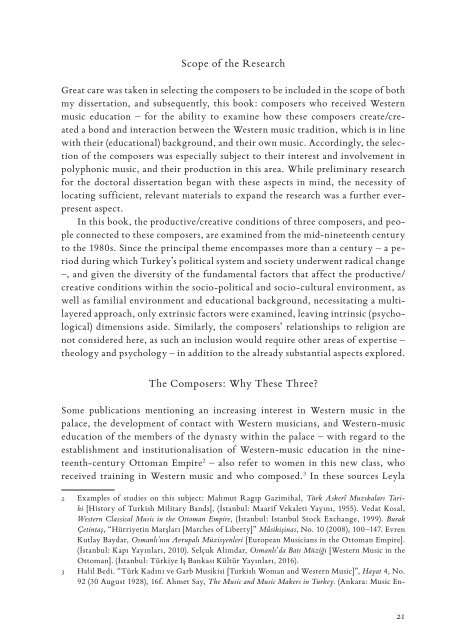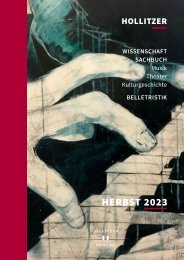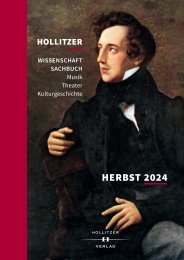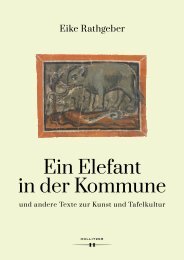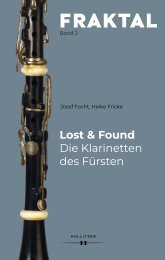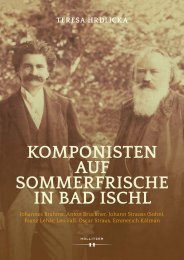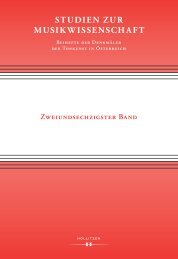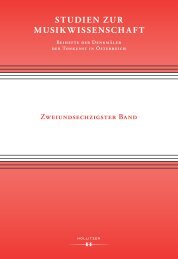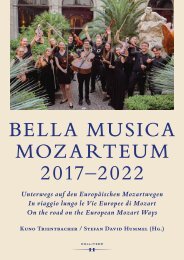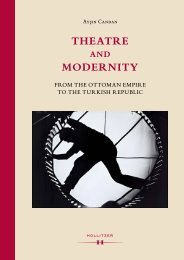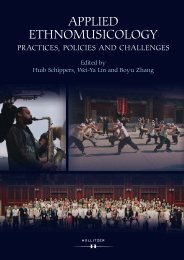You also want an ePaper? Increase the reach of your titles
YUMPU automatically turns print PDFs into web optimized ePapers that Google loves.
Scope of the Research<br />
Great care was taken in selecting the composers to be included in the scope of both<br />
my dissertation, and subsequently, this book: composers who received Western<br />
music education – for the ability to examine how these composers create/created<br />
a bond and interaction between the Western music tradition, which is in line<br />
with their (educational) background, and their own music. Accordingly, the selection<br />
of the composers was especially subject to their interest and involvement in<br />
polyphonic music, and their production in this area. While preliminary research<br />
for the doctoral dissertation began with these aspects in mind, the necessity of<br />
locating sufficient, relevant materials to expand the research was a further everpresent<br />
aspect.<br />
In this book, the productive/creative conditions of three composers, and people<br />
connected to these composers, are examined from the mid-nineteenth century<br />
to the 1980s. Since the principal theme encompasses more than a century – a period<br />
during which Turkey’s political system and society underwent radical change<br />
–, and given the diversity of the fundamental factors that affect the productive/<br />
creative conditions within the socio-political and socio-cultural environment, as<br />
well as familial environment and educational background, necessitating a multilayered<br />
approach, only extrinsic factors were examined, leaving intrinsic (psychological)<br />
dimensions aside. Similarly, the composers’ relationships to religion are<br />
not considered here, as such an inclusion would require other areas of expertise –<br />
theology and psychology – in addition to the already substantial aspects explored.<br />
The <strong>Composers</strong>: Why These Three?<br />
Some publications mentioning an increasing interest in Western music in the<br />
palace, the development of contact with Western musicians, and Western-music<br />
education of the members of the dynasty within the palace – with regard to the<br />
establishment and institutionalisation of Western-music education in the nineteenth-century<br />
Ottoman Empire 2 – also refer to women in this new class, who<br />
received training in Western music and who composed. 3 In these sources Leyla<br />
2 Examples of studies on this subject: Mahmut Ragıp Gazimihal, Türk Askerî Muzıkaları Tarihi<br />
[History of Turkish Military Bands], (İstanbul: Maarif Vekaleti Yayını, 1955). Vedat Kosal,<br />
Western Classical Music in the Ottoman Empire, (İstanbul: Istanbul Stock Exchange, 1999). Burak<br />
Çetintaş, “Hürriyetin Marşları [Marches of Liberty]” Mûsikişinas, No. 10 (2008), 100–147. Evren<br />
Kutlay Baydar, Osmanlı’nın Avrupalı Müzisyenleri [European Musicians in the Ottoman Empire].<br />
(İstanbul: Kapı Yayınları, 2010). Selçuk Alimdar, Osmanlı’da Batı Müziği [Western Music in the<br />
Ottoman]. (İstanbul: Türkiye İş Bankası Kültür Yayınları, 2016).<br />
3 Halil Bedi. “Türk Kadını ve Garb Musikisi [Turkish Woman and Western Music]”, Hayat 4, No.<br />
92 (30 August 1928), 16f. Ahmet Say, The Music and Music Makers in Turkey. (Ankara: Music En-<br />
21


